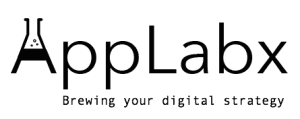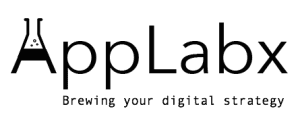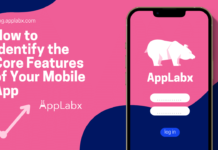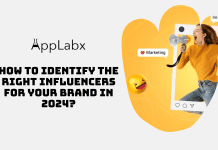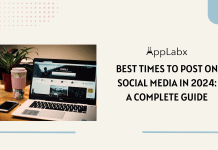Key Takeaways
- Define clear social media goals to align your strategy with business objectives and measure success effectively.
- Identify your target audience and choose the social platforms where they are most active for maximum engagement.
- Develop engaging content and maintain a consistent posting schedule, then continuously measure performance to optimize results.
In today’s digital landscape, social media marketing has become a cornerstone for businesses seeking to build brand awareness, engage with their audience, and drive sales. However, simply having a presence on popular social platforms is no longer enough to achieve meaningful results. Without a well-defined social media marketing strategy, efforts can become scattered, ineffective, and fail to deliver a return on investment. Whether you are a small business owner, a marketing professional, or an entrepreneur, understanding how to create a social media marketing strategy is essential for standing out in a crowded marketplace.

A social media marketing strategy acts as a roadmap that guides your brand’s communication and interaction on platforms such as Facebook, Instagram, LinkedIn, Twitter, and TikTok. It helps you align your marketing objectives with the behaviors and preferences of your target audience, ensuring your content reaches the right people at the right time. Moreover, a strategic approach allows for better resource allocation, improved engagement, and measurable growth over time.
This comprehensive guide breaks down the process of creating a successful social media marketing strategy into five simple, actionable steps. By following these steps, you can build a plan that not only increases your online visibility but also drives sustainable business growth. From defining clear goals and identifying your target audience to selecting the most effective platforms, crafting engaging content, and continuously optimizing your efforts based on performance data, this blog will equip you with the knowledge to build a winning strategy.
Whether you are starting from scratch or looking to refine your existing approach, this step-by-step framework is designed to simplify the complexities of social media marketing. By the end of this guide, you will have a clear understanding of how to create a strategy that enhances brand loyalty, boosts engagement, and generates tangible results in today’s competitive digital environment.
But, before we venture further, we like to share who we are and what we do.
About AppLabx
From developing a solid marketing plan to creating compelling content, optimizing for search engines, leveraging social media, and utilizing paid advertising, AppLabx offers a comprehensive suite of digital marketing services designed to drive growth and profitability for your business.
AppLabx is well known for helping companies and startups create world-class Social Media Marketing Strategies.
At AppLabx, we understand that no two businesses are alike. That’s why we take a personalized approach to every project, working closely with our clients to understand their unique needs and goals, and developing customized strategies to help them achieve success.
If you need a digital consultation, then send in an inquiry here.
How to Create a Social Media Marketing Strategy in 5 Simple Steps
- Define Your Social Media Goals
- Identify Your Target Audience
- Choose the Right Social Media Platforms
- Develop Engaging Content and Posting Schedule
- Measure Performance and Optimize Strategy
1. Define Your Social Media Goals
Defining clear and actionable social media goals is the foundational step in creating a successful social media marketing strategy. Without well-defined goals, it’s difficult to measure progress, allocate resources effectively, or optimize campaigns for better results. This section explains how to set effective social media goals that align with your overall business objectives and provides practical examples and frameworks for clarity.
Why Defining Social Media Goals Matters
- Provides direction and focus for all social media activities
- Helps measure success through specific key performance indicators (KPIs)
- Facilitates better resource allocation and prioritization
- Enables alignment with broader marketing and business objectives
- Encourages consistent evaluation and optimization of campaigns
Types of Social Media Goals
Social media goals generally fall into the following categories. Selecting the right goal type depends on your business model and marketing priorities:
| Goal Type | Description | Example Goal Statement |
|---|---|---|
| Brand Awareness | Increase visibility and recognition of your brand | Increase Facebook page followers by 20% in 3 months |
| Lead Generation | Capture potential customers’ contact information | Generate 100 qualified leads via Instagram in Q3 |
| Engagement | Foster interactions such as likes, comments, shares | Achieve a 5% engagement rate on LinkedIn posts monthly |
| Website Traffic | Drive users from social media to your website | Increase referral traffic from Twitter by 30% over 6 months |
| Sales and Conversions | Directly boost product or service sales via social channels | Generate $10,000 in sales from Facebook ads within 2 months |
| Customer Support | Provide timely assistance and improve customer satisfaction | Respond to 95% of Twitter inquiries within 1 hour |
Setting SMART Goals for Social Media Marketing
The SMART framework ensures goals are clear and achievable:
- Specific: Clearly define what you want to achieve
- Measurable: Use metrics to track progress
- Achievable: Set realistic targets based on available resources
- Relevant: Align goals with overall business objectives
- Time-bound: Specify deadlines to create urgency
Example of a SMART goal:
“Increase Instagram followers by 15% and boost average post engagement by 10% within the next 90 days.”
How to Identify the Right Social Media Goals for Your Business
- Analyze Business Objectives: Understand how social media can support overall goals such as revenue growth, customer retention, or market expansion.
- Review Past Performance: Look at previous social media metrics to identify areas needing improvement or opportunities to scale.
- Understand Audience Behavior: Determine what actions your target audience takes on social media (e.g., following, sharing, clicking links).
- Consult Stakeholders: Involve marketing, sales, and customer service teams to ensure goals are aligned across departments.
Example Goal-Setting Matrix
| Business Objective | Social Media Goal | Key Metrics | Platform Example |
|---|---|---|---|
| Increase Brand Awareness | Grow social media following | Number of followers, reach | Instagram, TikTok |
| Generate Leads | Capture contacts via gated content | Lead form submissions, CTR | LinkedIn, Facebook |
| Drive Website Traffic | Increase referral visits | Website visits, bounce rate | Twitter, Pinterest |
| Boost Sales | Promote product launches | Conversion rate, sales volume | Facebook Ads, Instagram Shopping |
| Improve Customer Service | Faster response time | Response time, customer satisfaction score | Twitter, Facebook Messenger |
Tools to Help Define and Track Social Media Goals
- Google Analytics: Track referral traffic and conversions from social media
- Facebook Insights / Instagram Analytics: Monitor engagement and follower growth
- LinkedIn Analytics: Measure post performance and lead generation
- Hootsuite / Buffer: Schedule content and consolidate reporting across platforms
- HubSpot / Salesforce: Integrate social leads into CRM for sales tracking
By investing time in clearly defining your social media goals upfront, you set the stage for a focused and data-driven strategy. This clarity enables you to measure performance meaningfully and continuously optimize your campaigns to deliver maximum business value.
2. Identify Your Target Audience
Identifying your target audience is a crucial step in building an effective social media marketing strategy. Without a clear understanding of who your audience is, your content may fail to resonate, resulting in low engagement, wasted resources, and missed opportunities. This section breaks down how to accurately define and understand your target audience with actionable insights, examples, and helpful frameworks.
Why Identifying Your Target Audience is Essential
- Ensures content relevance and increases engagement
- Helps tailor messaging and tone to audience preferences
- Optimizes ad targeting for better ROI
- Guides platform selection based on where your audience spends time
- Enhances customer experience and brand loyalty
How to Identify Your Target Audience
1. Analyze Existing Customer Data
- Review demographic data from your current customers: age, gender, location, income, education
- Use CRM tools to analyze purchasing behavior and preferences
- Identify your most profitable customer segments
- Example: A clothing brand may find its top customers are females aged 25-34 living in urban areas
2. Conduct Market Research
- Use surveys and questionnaires to gather insights on customer needs and challenges
- Analyze industry reports for trends in consumer behavior
- Study competitors’ audiences through social media and review platforms
- Example: A B2B software company surveys its clients to understand pain points in workflow management
3. Use Social Media Analytics Tools
- Platforms like Facebook Insights, Instagram Analytics, and LinkedIn Analytics provide demographic breakdowns of your followers
- Track engagement metrics by audience segments to identify your most active users
- Use these insights to refine your target persona profiles
4. Develop Buyer Personas
- Create detailed profiles representing your ideal customers
- Include demographic details, interests, pain points, goals, and preferred communication channels
- Example Persona Table:
| Persona Name | Age | Occupation | Interests | Social Platforms Used | Pain Points | Goals |
|---|---|---|---|---|---|---|
| Marketing Mary | 30 | Marketing Manager | Digital trends, analytics | LinkedIn, Twitter | Difficulty measuring ROI | Streamline marketing campaigns |
| Fitness Frank | 25 | Personal Trainer | Health, nutrition | Instagram, TikTok | Attracting new clients | Build personal brand online |
| Entrepreneur Emma | 40 | Small Business Owner | Business growth, finance | Facebook, LinkedIn | Managing limited marketing budget | Increase local customer base |
Audience Segmentation Strategies
1. Demographic Segmentation
- Age, gender, income, education, occupation
- Useful for targeting broad audience groups
- Example: Luxury brands targeting high-income adults aged 35-50
2. Geographic Segmentation
- Location such as country, region, city, or climate
- Important for local businesses or global brands with regional campaigns
- Example: A restaurant promoting special offers to customers within a 10-mile radius
3. Psychographic Segmentation
- Values, attitudes, interests, lifestyle
- Helps create emotionally resonant messaging
- Example: Eco-friendly product brands targeting environmentally conscious consumers
4. Behavioral Segmentation
- Purchasing habits, brand loyalty, product usage frequency
- Ideal for personalized marketing and retargeting
- Example: E-commerce businesses offering discounts to repeat buyers
Tools and Techniques to Identify and Understand Your Audience
| Tool/Technique | Purpose | Benefits |
|---|---|---|
| Google Analytics | Analyze website traffic sources and user behavior | Understand demographics and interests |
| Facebook Audience Insights | Detailed social media demographic and psychographic data | Refine Facebook ad targeting |
| SurveyMonkey/Typeform | Collect direct feedback via surveys | Gather qualitative and quantitative insights |
| Social Listening Tools (e.g., Brandwatch, Sprout Social) | Monitor brand mentions and audience sentiment | Identify trends and customer needs |
| Competitor Analysis Tools (e.g., SEMrush, BuzzSumo) | Analyze competitor’s audience engagement | Discover gaps and opportunities |
Example: How Audience Identification Informs Content Strategy
| Audience Segment | Preferred Content Type | Example Post Ideas | Best Platforms |
|---|---|---|---|
| Young Professionals | Short videos, tips, industry news | “5 Quick Career Hacks for Millennials” | LinkedIn, Instagram |
| Parents | How-to guides, community stories | “Top 10 Family-Friendly Activities Near You” | Facebook, Pinterest |
| Tech Enthusiasts | Product reviews, tutorials | “In-Depth Review of the Latest Smartphone” | YouTube, Twitter |
Visual Chart: Audience Identification Process
[Start] → Collect Customer Data → Conduct Market Research → Analyze Social Analytics → Create Buyer Personas → Segment Audience → Tailor Content & Ads
By thoroughly identifying and understanding your target audience, your social media marketing strategy becomes more focused, efficient, and effective. This clarity not only improves engagement rates but also drives higher conversion rates by delivering the right message to the right people on the right platforms.
3. Choose the Right Social Media Platforms
Selecting the right social media platforms is a critical step in executing an effective social media marketing strategy. Each platform has unique user demographics, content formats, and engagement patterns, making some channels more suitable than others depending on your business goals and target audience. This section provides a detailed guide to choosing the platforms that will maximize your reach, engagement, and conversions.
Why Choosing the Right Platforms Matters
- Optimizes resource allocation by focusing on platforms where your audience is active
- Enhances content relevance by matching format preferences of each platform
- Improves advertising efficiency with better targeting options
- Supports your specific marketing goals more effectively
- Avoids spreading efforts too thin across too many channels
Factors to Consider When Choosing Social Media Platforms
1. Understand Your Target Audience’s Platform Preferences
- Analyze where your audience spends most of their social media time
- Use platform-specific analytics to identify engagement trends
- Consider age, profession, interests, and online behavior
- Example: Younger audiences prefer TikTok and Instagram, while professionals favor LinkedIn
2. Align Platforms with Your Content Type and Format
- Visual brands benefit from image/video-centric platforms like Instagram, Pinterest, and TikTok
- B2B companies often gain traction on LinkedIn and Twitter due to professional networking
- Blogs and long-form content perform well on platforms like Facebook and LinkedIn
- Example: A fashion retailer should prioritize Instagram and Pinterest for visual storytelling
3. Match Platforms with Business Goals
- Brand awareness: Facebook and Instagram have large user bases ideal for reach
- Lead generation: LinkedIn is effective for B2B lead generation
- Customer service: Twitter and Facebook provide responsive engagement features
- E-commerce sales: Instagram Shopping and Facebook Shops facilitate direct purchases
4. Evaluate Advertising and Analytics Capabilities
- Platforms with robust ad management tools offer better targeting and measurement (e.g., Facebook Ads Manager, LinkedIn Campaign Manager)
- Consider availability of retargeting and lookalike audience features
- Example: Facebook and Instagram allow advanced custom audience creation based on website traffic
Overview of Major Social Media Platforms
| Platform | Primary Audience Demographics | Content Formats | Ideal Business Use Cases | Advertising Strengths |
|---|---|---|---|---|
| Broad: 25-54 years, diverse global audience | Text, images, videos, live, events | B2C and local businesses, community building | Highly granular ad targeting, large reach | |
| Younger audience: 18-34 years, visually driven | Photos, videos, stories, reels | Lifestyle, fashion, food, travel brands | Strong for visual ads and influencer marketing | |
| Professionals, B2B audience, 25-50+ years | Articles, text posts, videos, documents | B2B marketing, recruitment, thought leadership | Advanced targeting by industry, job title | |
| News seekers, professionals, 18-49 years | Text, images, videos, threads | Real-time updates, customer service, brand voice | Promoted tweets, trend targeting | |
| TikTok | Gen Z and Millennials, 16-30 years | Short-form video, live | Viral marketing, brand awareness for youth | Creative video ads, hashtag challenges |
| Predominantly female, 25-45 years | Images, infographics, videos | DIY, fashion, home decor, food industries | Promoted pins, shopping ads | |
| YouTube | All age groups, especially 18-49 | Long and short videos | Product demos, tutorials, entertainment | Video ads with strong targeting |
Platform Selection Matrix
| Business Type | Recommended Platforms | Rationale |
|---|---|---|
| B2B Technology | LinkedIn, Twitter, YouTube | Professional networking, thought leadership, tutorials |
| Retail & E-commerce | Instagram, Facebook, Pinterest | Visual storytelling, direct shopping integration |
| Local Services | Facebook, Instagram, Twitter | Community engagement, local ads, customer service |
| Entertainment & Media | TikTok, YouTube, Instagram | Video content, viral reach, influencer partnerships |
| Nonprofit & Education | Facebook, LinkedIn, Twitter | Awareness campaigns, professional networking |
Case Study: Platform Choice Impact
- Brand A (Fashion Retailer) focused on Instagram and Pinterest to showcase high-quality product photos and engage visually. Result: 30% increase in online sales within six months.
- Brand B (B2B Software Company) prioritized LinkedIn and Twitter for lead generation and industry insights sharing. Result: 40% growth in qualified leads in the first quarter.
Tips for Managing Multiple Platforms
- Start with 1-2 platforms and expand as capacity grows
- Use social media management tools (e.g., Hootsuite, Buffer) to schedule and monitor posts
- Repurpose content tailored for each platform’s format and audience preferences
- Regularly analyze platform performance and adjust focus accordingly
Visual Chart: Platform Selection Flow
[Identify Business Goals] → [Analyze Audience Platforms] → [Evaluate Content Fit] → [Assess Advertising Capabilities] → [Select Platforms]
By strategically choosing the right social media platforms, businesses can focus efforts where they matter most, engage audiences more effectively, and maximize the impact of their social media marketing investment. This targeted approach ensures higher engagement, better brand positioning, and measurable returns aligned with your marketing goals.
4. Develop Engaging Content and Posting Schedule
Creating compelling content and maintaining a consistent posting schedule are fundamental to the success of any social media marketing strategy. Engaging content captures attention, encourages interaction, and builds brand loyalty, while a well-planned posting schedule ensures your audience sees your messages at the optimal times. This section provides an in-depth guide on how to develop content that resonates with your target audience and establish a posting rhythm that maximizes reach and engagement.
Understanding What Makes Content Engaging
Key Elements of Engaging Content
- Relevance: Content should address your audience’s interests, needs, and pain points.
- Value: Offer educational, entertaining, or inspirational content that benefits your followers.
- Visual Appeal: Use high-quality images, videos, infographics, and graphics to capture attention.
- Authenticity: Genuine and relatable content builds trust and strengthens brand connection.
- Call-to-Action (CTA): Encourage audience interaction through likes, shares, comments, or clicks.
Types of Content That Drive Engagement
- Educational Content: Tutorials, how-tos, industry insights, and tips.
- User-Generated Content (UGC): Customer testimonials, reviews, and reposts.
- Behind-the-Scenes: Company culture, product development stories, team introductions.
- Interactive Content: Polls, quizzes, contests, and live Q&A sessions.
- Trending Topics: Timely posts related to current events, holidays, or viral trends.
Content Formats and Best Practices
| Content Format | Description | Best Use Case | Example |
|---|---|---|---|
| Images | Photos, illustrations, memes | Visual storytelling, product highlights | Fashion brand showcasing new collection |
| Videos | Short clips, tutorials, live streams | Demonstrations, storytelling, engagement | Tech company demoing new software feature |
| Stories & Reels | Temporary or short videos/photos | Quick updates, behind-the-scenes, promos | Restaurant sharing daily specials |
| Infographics | Data visualizations and summaries | Educational content, statistics | Marketing agency explaining SEO trends |
| Blog Links | Sharing blog posts or articles | Driving traffic to website | E-commerce sharing product guides |
Creating a Content Calendar and Posting Schedule
Importance of a Content Calendar
- Organizes content topics, formats, and posting dates in one place
- Ensures consistency and prevents last-minute scrambling
- Enables strategic alignment with marketing campaigns and seasonal events
- Facilitates collaboration among marketing teams
How to Build an Effective Content Calendar
- Plan Weekly or Monthly: Outline themes, campaigns, and key dates
- Balance Content Types: Mix promotional, educational, and engagement-focused posts
- Schedule Around Peak Times: Post when your audience is most active (use analytics to identify these times)
- Include Calls-to-Action: Encourage interactions with every post
- Allow Flexibility: Adjust for trending topics or spontaneous opportunities
Example Posting Schedule Matrix
| Day | Platform | Content Type | Posting Time (Local) | Objective |
|---|---|---|---|---|
| Monday | Product Showcase | 11:00 AM | Brand awareness | |
| Tuesday | Industry Article | 9:00 AM | Thought leadership | |
| Wednesday | User-Generated Content | 1:00 PM | Engagement | |
| Thursday | Poll/Question | 12:00 PM | Audience interaction | |
| Friday | TikTok | Behind-the-Scenes Video | 5:00 PM | Authenticity & brand story |
| Saturday | Stories (Promo) | 10:00 AM | Sales & offers | |
| Sunday | Weekly Roundup Post | 6:00 PM | Recap & engagement |
Tips for Developing High-Quality Content
- Use Data to Guide Content Creation: Analyze past post performance to identify what resonates
- Leverage Storytelling: Humanize your brand by telling stories that evoke emotion
- Incorporate SEO Keywords: Use relevant keywords in captions and hashtags to improve discoverability
- Optimize Visuals for Each Platform: Adjust size, format, and style for Instagram, Facebook, LinkedIn, etc.
- Repurpose Content: Convert blog posts into videos, infographics, or carousel posts to extend reach
Tools to Aid Content Development and Scheduling
| Tool | Purpose | Key Features |
|---|---|---|
| Canva | Graphic design and visual content | Templates, drag-and-drop editor |
| Adobe Premiere Pro | Video editing | Professional-grade editing tools |
| Hootsuite | Scheduling and analytics | Multi-platform scheduling, performance reports |
| Buffer | Content calendar and posting | Easy scheduling, team collaboration |
| Google Sheets | Custom content calendars | Flexible, collaborative planning |
Example: How Posting Schedule Boosts Engagement
- A health and wellness brand found that posting motivational quotes and short workout videos on Instagram Stories between 7 AM and 9 AM increased daily engagement by 25%.
- A SaaS company using LinkedIn to post thought leadership articles every Tuesday and Thursday at 9 AM saw a 30% increase in lead inquiries over three months.
Visual Chart: Content Development Cycle
[Research Audience Needs] → [Plan Content Types] → [Create & Design Content] → [Schedule Posts] → [Monitor Performance] → [Adjust Strategy]
Developing engaging content combined with a strategic posting schedule enables brands to maintain a consistent online presence that drives meaningful interactions. This disciplined approach ensures your social media channels remain active and relevant, supporting long-term growth and stronger connections with your target audience.
5. Measure Performance and Optimize Strategy
Measuring the performance of your social media marketing efforts and continuously optimizing your strategy is essential to achieving sustained success. Without clear measurement and regular adjustments, even the best-planned strategies can falter. This section dives deeply into how to track relevant metrics, interpret data, and refine your social media marketing approach for maximum impact.
Importance of Measuring Social Media Performance
- Validates whether your social media goals are being met
- Provides insights into audience behavior and content effectiveness
- Helps justify marketing spend and resource allocation
- Identifies strengths, weaknesses, and opportunities for improvement
- Enables data-driven decision-making and agile strategy adjustments
Key Performance Indicators (KPIs) to Track
1. Engagement Metrics
- Likes, comments, shares, and reactions: Measure how actively users interact with your content
- Engagement rate: Ratio of total engagement to total followers or impressions
- Example: An engagement rate above 3% is generally considered strong on Instagram
2. Reach and Impressions
- Reach: Number of unique users who saw your content
- Impressions: Total number of times your content was displayed (including multiple views by the same user)
- Useful to gauge brand visibility and awareness growth
3. Follower Growth
- Tracks the increase or decrease in followers over time
- Indicates audience interest and brand popularity
4. Website Traffic from Social Media
- Number of visitors driven to your website via social channels
- Use UTM parameters and Google Analytics to track sources and behaviors
- Key for measuring how social media supports conversion funnels
5. Conversion Metrics
- Leads generated, sign-ups, downloads, or sales attributed to social media efforts
- Conversion rate from social campaigns
- Example: Tracking sales from Facebook Ads using Facebook Pixel
6. Customer Response and Sentiment
- Response time to messages and comments
- Customer satisfaction scores from social interactions
- Sentiment analysis to monitor brand reputation
Tools for Measuring Social Media Performance
| Tool | Purpose | Key Features |
|---|---|---|
| Google Analytics | Track website traffic and conversions from social media | UTM tracking, behavior flow analysis |
| Facebook Insights | Monitor post performance and audience demographics | Engagement metrics, reach, follower growth |
| Instagram Analytics | Analyze content interaction and audience behavior | Stories, posts, follower insights |
| LinkedIn Analytics | Track post engagement and follower trends | Company page analytics, lead gen metrics |
| Sprout Social | Comprehensive social media management and reporting | Cross-platform reports, sentiment analysis |
| Hootsuite Analytics | Aggregate social data from multiple platforms | Customizable reports, scheduling insights |
Creating a Social Media Performance Dashboard
| Metric | Platform | Frequency to Monitor | Target/Goal | Status (Example) |
|---|---|---|---|---|
| Engagement Rate | Weekly | >3% | 3.5% (on track) | |
| Follower Growth | Monthly | +500 new followers | +450 (slightly behind) | |
| Website Traffic | Google Analytics | Monthly | 2,000 visits/month | 2,300 visits (exceeding) |
| Conversion Rate | Facebook Ads | Campaign End | 5% | 4.7% (needs improvement) |
| Response Time | Weekly | <1 hour | 45 minutes (on track) | |
| Sentiment Score | Brandwatch | Monthly | Positive > 75% | 70% (needs attention) |
How to Analyze Social Media Data Effectively
- Compare against benchmarks: Use industry standards and past performance as reference points
- Look for trends over time: Identify patterns in engagement, growth, or decline
- Segment data by audience and content types: Determine what works best for specific demographics or formats
- Identify underperforming content: Review posts with low engagement to refine content strategy
- Evaluate paid vs. organic performance: Adjust budget allocation accordingly
Optimizing Your Social Media Strategy Based on Data
1. Content Refinement
- Increase production of high-performing content types
- Test new formats (videos, stories, polls) based on audience preferences
- Adjust messaging and tone to better resonate with followers
2. Posting Schedule Adjustments
- Shift posting times to align with peak audience activity
- Increase or decrease posting frequency based on engagement patterns
3. Platform Focus
- Reallocate resources toward platforms driving highest ROI
- Consider scaling back or pausing underperforming channels
4. Paid Advertising Tweaks
- Optimize ad targeting and creatives based on campaign performance data
- Experiment with A/B testing for ads to improve conversion rates
5. Audience Engagement Improvements
- Respond promptly to comments and messages
- Encourage user-generated content and community participation
- Monitor sentiment and address negative feedback proactively
Example: Optimization Case Study
- A retail brand tracked Facebook post engagement and found videos had 40% higher interaction than images. They increased video content production, resulting in a 25% lift in page engagement over two months.
- A SaaS company used Google Analytics to identify that LinkedIn posts generated the most qualified traffic. They shifted budget toward LinkedIn ads, boosting lead conversions by 30%.
Visual Framework: Continuous Improvement Cycle
[Set Goals] → [Measure Performance] → [Analyze Data] → [Implement Changes] → [Review Results] → [Repeat]
Consistently measuring and optimizing your social media marketing strategy ensures your efforts remain effective and aligned with evolving audience behaviors and platform algorithms. By leveraging data insights, businesses can maximize engagement, increase conversions, and maintain a competitive edge in the dynamic social media landscape.
Conclusion
Crafting an effective social media marketing strategy is no longer optional for businesses seeking to thrive in today’s highly competitive digital environment. As outlined in this guide, following the five simple steps—defining clear social media goals, identifying your target audience, choosing the right platforms, developing engaging content alongside a strategic posting schedule, and continuously measuring and optimizing your efforts—forms the backbone of a successful social media presence. Each step plays a crucial role in ensuring your marketing activities are purposeful, data-driven, and aligned with your broader business objectives.
Setting precise and measurable goals from the outset provides clarity and focus, enabling you to track progress and evaluate success. Understanding who your audience is and what motivates them allows you to tailor your messaging to resonate effectively, making your campaigns more impactful. Selecting the social media platforms best suited to your audience’s preferences and your content style ensures your efforts reach the right people at the right time, optimizing both organic and paid strategies.
Moreover, creating compelling content that educates, entertains, or inspires your followers is essential to foster engagement and build lasting relationships. Coupled with a well-planned posting schedule, this consistency keeps your brand top-of-mind and strengthens customer loyalty. Finally, the commitment to regularly measure performance and optimize your approach based on insights ensures continuous improvement, helping you stay agile amid ever-evolving social media trends and algorithms.
Implementing these five steps systematically will not only enhance your social media marketing effectiveness but also contribute significantly to brand growth, customer engagement, and revenue generation. Whether you are a small business, startup, or established enterprise, investing in a strategic, structured social media marketing plan is key to unlocking your full potential in the digital marketplace. Begin today by taking these actionable steps, monitor your results, and refine your strategy to keep pace with the dynamic social media landscape. With persistence and data-driven decision-making, your social media marketing efforts will drive sustainable success and meaningful connections with your audience.
If you are looking for a top-class digital marketer, then book a free consultation slot here.
If you find this article useful, why not share it with your friends and business partners, and also leave a nice comment below?
We, at the AppLabx Research Team, strive to bring the latest and most meaningful data, guides, and statistics to your doorstep.
To get access to top-quality guides, click over to the AppLabx Blog.
People also ask
What is a social media marketing strategy?
A social media marketing strategy is a plan that outlines your business goals, target audience, content types, platforms, and tactics to effectively promote your brand on social media channels.
Why is having a social media strategy important?
A strategy helps focus your efforts, ensures consistent messaging, improves audience engagement, and maximizes ROI by aligning social media activities with business objectives.
How do I define social media marketing goals?
Set specific, measurable, achievable, relevant, and time-bound (SMART) goals that align with your business objectives, such as increasing brand awareness or generating leads.
How can I identify my target audience?
Use customer data, social media analytics, surveys, and competitor research to understand demographics, interests, and online behavior of your ideal customers.
Which social media platforms should my business use?
Choose platforms based on where your target audience is most active and the type of content you create; for example, Instagram for visuals, LinkedIn for B2B, TikTok for younger audiences.
What types of content work best on social media?
Engaging visuals, videos, stories, user-generated content, polls, and educational posts typically perform well across platforms and help boost interaction.
How often should I post on social media?
Posting frequency varies by platform; generally, 3-7 times per week on Instagram and Facebook, and daily or multiple times per day on Twitter and TikTok is effective.
What is a social media content calendar?
A content calendar is a schedule that organizes and plans your posts, helping maintain consistency, align campaigns, and optimize posting times.
How do I measure social media success?
Track key metrics like engagement rate, reach, follower growth, website traffic from social media, and conversion rates aligned with your goals.
What tools can help with social media scheduling?
Tools like Hootsuite, Buffer, and Later allow you to plan, schedule, and analyze your social media posts across multiple platforms.
How do I optimize social media content for better engagement?
Use high-quality visuals, write clear CTAs, post at peak times, engage with your audience, and use relevant hashtags to increase visibility.
What is the role of paid advertising in social media strategy?
Paid ads help boost reach, target specific audiences, and drive conversions faster than organic posts, complementing your overall strategy.
How do I create a buyer persona for social media?
Combine demographic, psychographic, and behavioral data to create a detailed profile representing your ideal social media follower or customer.
Can I use the same content across all social media platforms?
While repurposing is efficient, tailor content format and tone to fit each platform’s unique audience and best practices.
How do I stay updated with social media trends?
Follow industry blogs, join marketing communities, monitor platform updates, and analyze competitor strategies regularly.
What is engagement rate and why is it important?
Engagement rate measures interaction levels on your posts relative to your audience size; it reflects how well your content resonates.
How do I handle negative comments on social media?
Respond promptly, professionally, and empathetically; address concerns offline if needed, and learn from feedback to improve.
Should I focus on organic or paid social media growth?
Both are important; organic builds community and trust, while paid accelerates growth and targets specific goals.
How long does it take to see results from a social media strategy?
Results vary, but noticeable improvements often occur within 3-6 months with consistent effort and optimization.
What are user-generated content (UGC) benefits?
UGC builds authenticity, increases engagement, and leverages your community to promote your brand naturally.
How can I use analytics to improve my social media strategy?
Analyze performance data to identify top-performing content, optimal posting times, and audience preferences, then adjust accordingly.
What mistakes should I avoid when creating a social media strategy?
Avoid unclear goals, ignoring analytics, inconsistent posting, neglecting audience engagement, and spreading too thin across platforms.
Is it necessary to post at specific times?
Yes, posting when your audience is most active increases visibility and engagement; use analytics to find these peak times.
How do I integrate social media with other marketing channels?
Align messaging, cross-promote content, use social ads to support campaigns, and track combined impact on your overall marketing goals.
What role does storytelling play in social media marketing?
Storytelling creates emotional connections, humanizes your brand, and encourages audience interaction and loyalty.
How can small businesses create an effective social media strategy?
Focus on a few platforms, define clear goals, create quality content, engage authentically, and regularly analyze performance for improvement.
What is social listening and why is it important?
Social listening involves monitoring online conversations about your brand and industry to gather insights and respond proactively.
How do I set a budget for social media marketing?
Determine your goals, research ad costs on platforms, allocate funds for content creation, paid ads, and tools, then adjust based on ROI.
How do hashtags improve social media marketing?
Hashtags increase content discoverability, join trending conversations, and help target niche audiences.
What is the difference between reach and impressions?
Reach is the number of unique users who see your content; impressions count total views, including multiple views by the same user.
How important is consistency in social media marketing?
Consistency builds brand recognition, trust, and keeps your audience engaged, which is essential for long-term success.
